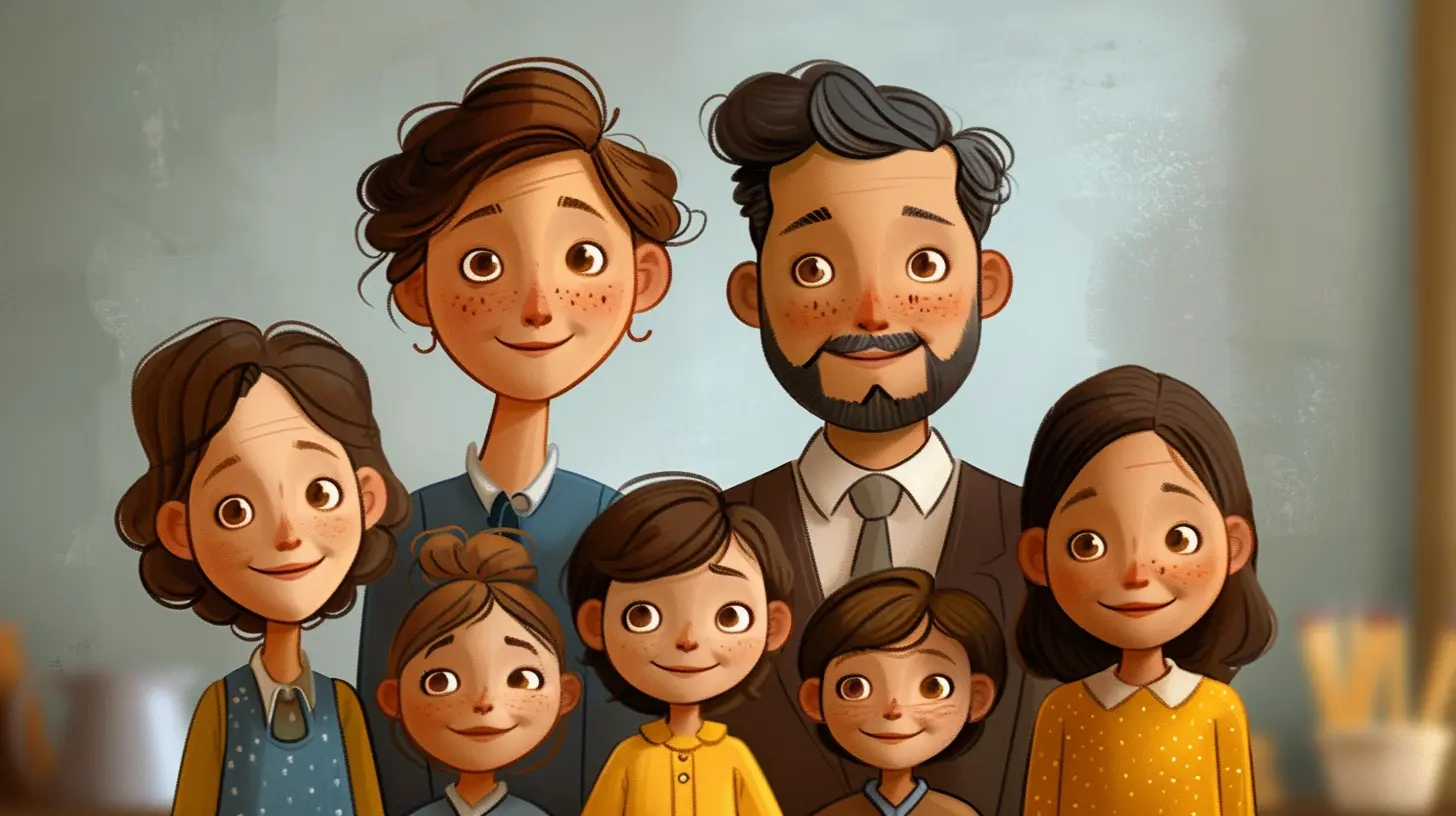11 March 2025
Change can be tough for kids, especially when it involves the dynamics of their family. Whether it's introducing a step-parent, step-sibling, or even welcoming a blended family into their lives, children often feel like their world is being flipped upside down. It’s normal for them to experience a mix of emotions, from confusion to jealousy to outright resistance.
As parents, we play a huge role in helping them navigate these changes with grace and empathy. So, how do we teach kids to accept and respect new family members? It’s not easy, but with patience, love, and a game plan, it’s absolutely possible. Let’s dive into some tips that can make the transition smoother for everyone.
Why Kids Struggle with New Family Members
First, let’s address the big question: why do kids sometimes resist new relationships in the family? To put it simply, change can feel threatening. For a child, their family is a safe haven—and when it shifts, they might feel like they’re losing their sense of security.Maybe they’re worried the new person will replace them or take away their parent’s attention. Maybe they feel loyalty to a biological parent and think liking someone new is "betraying" them. Or maybe, they’re just scared of the unknown. Whatever the reason, it’s important to validate their feelings instead of brushing them aside.
Start with Open, Honest Conversations
Give Them a Heads-Up
Out of the blue introductions? Definitely not the way to go. Nobody likes a surprise that uproots their day-to-day life, especially kids. Talk to your child in advance about what’s happening. Use age-appropriate language to explain the new family situation and why these changes are happening.For example, you might say, "I’ve met someone very special, and they’re going to be a part of our lives," or, "Your new step-sibling is excited to get to know you." This gives kids time to mentally prepare.
Acknowledge Their Feelings
Ever heard the saying, “Kids don’t need you to fix everything, they just need to feel heard”? This is one of those moments. Ask them how they feel about the change and really listen. “Are you nervous about meeting them? It’s okay if you are,” shows that their emotions are valid.Avoid dismissing their concerns with a quick “It’ll all work out!” Instead, try to empathize. For example, if they’re worried you won’t have time for them anymore, assure them with specific examples of how you’ll still prioritize them.
Set Realistic Expectations
It’s important to let children know that building relationships takes time. They’re not going to feel instant love and connection with new family members, and guess what? That’s perfectly normal.Introduce Slowly
Think of introducing new family members like learning to swim—nobody jumps straight into the deep end! Start with small, low-pressure interactions like a casual dinner or a fun outing together. Gradually increase the time spent together to allow relationships to grow naturally.Don’t Force Relationships
Let’s be honest here: forcing a child to call a step-parent “Mom” or “Dad” or pushing them to suddenly bond with a step-sibling is a recipe for resentment. Instead, give them the space to form their own connections in their own time. These bonds will grow stronger when they happen organically.
Model Acceptance and Respect
Kids are like sponges—they soak up everything they see and hear around them. If you want them to accept and respect new family members, you need to lead by example.Speak Positively About Everyone
Even if things feel a bit awkward initially, make it a point to speak kindly about the new family members in front of your child. Highlight their good qualities. “Isn’t it nice how [new family member] helped clean up after dinner?” sets the tone for acceptance.Set Boundaries for Rudeness
While it’s okay for kids to have mixed emotions, disrespectful behavior—like name-calling or refusing to engage—is not. Let them know that while they don’t have to love someone right away, being kind and respectful is non-negotiable.Find Common Ground
One of the best ways to help kids connect with new family members is by finding something they can enjoy together. Once they see they have things in common, it breaks down barriers and starts to build bonds.Encourage Shared Activities
Does your child love soccer? Maybe the new step-sibling does too. Or perhaps everyone can enjoy a family game night or movie marathon. Shared activities give kids and new family members a chance to interact in a fun, low-pressure environment.Celebrate Together
Whether it’s birthdays, holidays, or even just Taco Tuesdays, make an effort to celebrate as a family. These moments help to create new traditions and memories that bring everyone closer.Create a Safe Space for Your Child
At the end of the day, your child still needs to feel like they have a space that’s theirs. A big family change can feel overwhelming, so it’s important to ensure they know they’re still a priority.Maintain One-on-One Time
Carve out time in your schedule to spend with your child, just the two of you. Whether it’s grabbing ice cream, taking a walk, or just hanging out at home, this shows them that no matter how the family expands, your bond with them remains solid.Be Patient
Building acceptance and respect takes time. Your child might not warm up to new family members overnight—and that’s okay. What matters is that they feel supported through the journey.Seek Professional Support If Needed
Sometimes, despite your best efforts, family dynamics can become really challenging. That’s where a family counselor or therapist can be a lifesaver. If your child is struggling to adjust or there’s ongoing tension, a neutral third party can help everyone work through their emotions and find common ground.Celebrate the Wins
Every little step forward is a victory. Did your child sit next to their new step-sibling at dinner? High five! Did they laugh at a joke their step-parent made? Fantastic! Celebrate these moments and remind them that forming new relationships is a process, but they’re doing great.Final Thoughts
Let’s be real—blending families is no walk in the park. There will be bumps in the road and moments where it feels like you’re taking one step forward and two steps back. But by approaching this transition with empathy, open communication, and a whole lot of patience, you’re setting the stage for a family built on mutual respect and acceptance.And remember, you’re not on this journey alone. Lean on your own support system, talk to other parents who’ve been in similar situations, and, most importantly, give yourself grace. You’re navigating uncharted waters, but with love at the helm, you and your family will find your way.









Zephyra McFarlin
What a wonderful topic! Embracing new family members can be such a joyful adventure for kids. Teaching them love and respect nurtures empathy and connection. This journey creates lasting bonds and unforgettable memories. Thank you for sharing these valuable insights!
April 1, 2025 at 4:51 AM